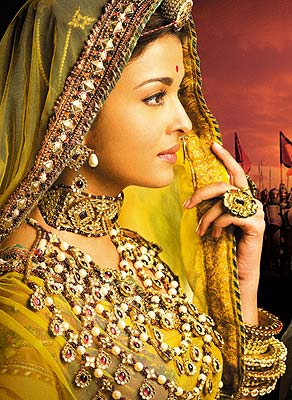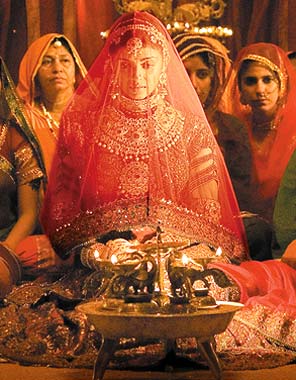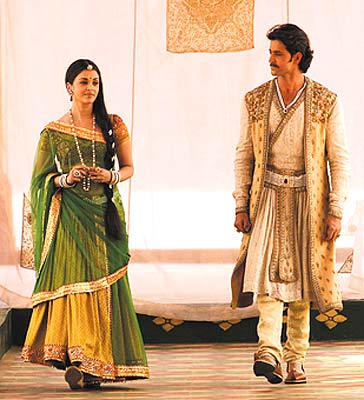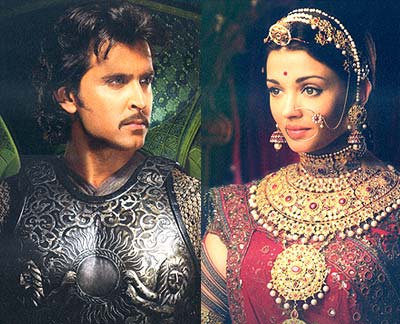 To say that A R Rahman has had a busy day is nothing new but he had an extraordinarily hectic day on Saturday last week.
To say that A R Rahman has had a busy day is nothing new but he had an extraordinarily hectic day on Saturday last week. In between giving the finishing touches to the score for Delhi-6 and taking in over a dozen congratulatory messages following three Oscar nominations for his work in Slumdog Millionaire, he was also getting ready to fly to Los Angeles to join fellow Oscar nominees at a formal dinner. The following interview with rediff.com's Arthur J Pais was conducted in his Chennai office.
How did you hear about your Oscar nominations?
I watched the live announcements on TV. You know they announce on TV just a few nominations including the best picture, director, script and the actors. The announcements were over and I switched off the TV and got ready for another working day at my studio in Chennai.
Just then I got a call from my agent in Hollywood, and I heard him say something about three nominations for Slumdog Millionaire. And I told him, Yes, I watched the TV and I know the film has received three nominations. He then said, you have received three nominations and in all the film had received 10.
You surely were expecting the nominations, weren't you?
I did not think seriously about the prospects. I am like the film's director Danny Boyle. You do your work and hope things work out well. Frankly speaking, I was very surprised that I got three nominations, two of them going for the songs. Some of my songs in Water and Rang De Basanti have made to the short list, and yet I was very surprised with the three nominations for Slumdog in two categories.
Why were you surprised?
I knew Jai Ho was a hit. I had heard about people cheering the song wherever the film has been shown. I though it would be okay to push for one song (for nominations) but MIA (who joined him in writing and singing O Saya) thought we should push that song too. And she proved to be absolutely right.
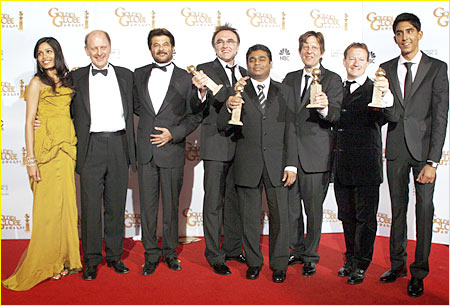 What happened to you when you heard of the three nominations for you?
What happened to you when you heard of the three nominations for you? I was happy for all the nominations the film had received. And I felt people in India will continue to be proud of this film. I was feeling very gloomy and I was very upset before the nominations were announced. I could not understand why and how some people had made the film controversial. I was deeply disturbed by the controversies. I was hurt. I knew the film was made with good intentions, and it shows in every scene in the film.
I always believed that this film is about goodness triumphing over evil. It sent out the message that life was indeed worth living and that all of us can come out of the darkness.
I also knew the film was about pure love and that it also celebrated the human spirit. There is a lot of negativity around us but here is a film that showed that people can actually overcome the divisions among ourselves and go beyond the things that are hurting us. It is a film all Indians can relate to and we ought to be proud that we are associated with it.
Director Danny Boyle says he just could not believe how excited you were when he offered you the film.
(Laughs). I was very exhausted when he met me over a year ago. I thought I was not going to do a film for a few months. When I saw the rough cut of Slumdog Millionaire, I knew I had to do the film. He wanted me to do a few songs but I said I wanted to do more.
Like what?
He had wanted some old songs to be used in the film. For instance the Choli Ke Peeche number. I offered to create my own version and that is how Ringa Ringa came into existence. And I was going to do the background score, too.
And how many days did all this take?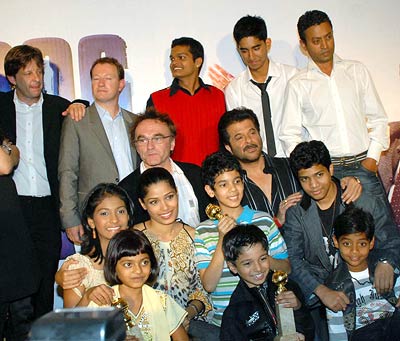
This is one of the fastest works I have ever done for a film. The songs and the rest of the score were done in just about 15 days.
You have said that when you took up Slumdog, you had to sacrifice a couple of movie projects.True, especially Ashutosh Gowarikar's What's Your Raashee? We worked together for Lagaan, Swades and Jodhaa-Akbar. All three were acclaimed and all box-office hits.
What went through your mind when you jumped at Slumdog?
I knew one doesn't get such an offer every day, and that the film could touch many people. One never thought of it getting any nominations or turning into a big hit. The film was showing only in about 500 theatres in America, and now it has expanded (grossing about $56 million in less than three months). I also felt that having worked with Ashutosh three times, I needed a break. And he too felt the same way. We said we will work together some time soon.
Another composer might have worried that he (Gowarikar) might not return to him.
(Chuckles) I believe what is my share would always come to me, and what isn't mine will not be there.
Have you also missed out other films because you were busy with other assignments?
There are quite a few. I could not take up Dil Chahta Hai. Also, Bunty Aur Babli. But I am glad that Shankar (Ehsaan and Loy) were able to shine in these films. I love their work in these films.
When you received the Golden Globe for Slumdog Millionaire the first thing you did was thank the Almighty.
I believe in the saying that if you recognise God in the smaller gatherings, God will recognise you in the larger gatherings. I don't consider myself a religious person, but I am inclined to be spiritual. When I pray, I do it hoping to be a better person, a better spiritual person.
You have worked again with director Rakeysh Omprakash Mehra recently.
I enjoyed working with him for Rang De Basanti and now we have completed Delhi-6. He is a visionary, and he is very focussed. He knows how to make the best use of a composer, and everyone associated with the film.
One of the much discussed songs in Delhi-6 is Bhor Bhaye and it uses the voices of Shreya and Bade Ghulam Ali Khan.
I heard Bade Ghulam Ali Khan's classic just about four years ago when I was buying classical Indian music at Rhythm House in Mumbai. I thought the song was divine. It was profound and yet it was accessible to anyone who had good musical sensibilities. There was no gimmicks in the song. I wondered why I had not heard it before.
What did you want to do with the song when you first heard it?
I heard it again and again and again. Then I discussed with Ashutosh Gowarikar the possibility of using it in Jodhaa-Akbar, but we could not find a situation for it. Here (in Delhi-6), it works very well. We have the song in his voice and we have Shreya singing the same song in such a way that you get the feeling that she (actress Sonam Kapoor) is learning to sing it.
The song Masakalli became a hit overnight.
It is a catchy song, and it is a matter of days that people get used to the other songs in the film. Mohit Chauhan and I had worked well in Rang De Basanti, and I wanted to work with him again. And this was an excellent opportunity. I felt he could bring freshness to the tune. There is laughter in the song, and an immediate appeal. The musical situations in the movie are quite interesting. Have you heard of a song that features pigeons, at least in recent films?
Tell us about the qawwali in Delhi-6.You listen to it carefully and you get to feel what Delhi-6 is about. I wanted Javed Ali for this song, and to give it some edginess, I added Kailash Kher's voice.
You also found an opportunity to sing the lovely Rehna Tu number.
(Chuckles). It is not always easy in the singer in me to persuade the composer in me. I think I was selfish but I wanted to sing Rehna Tu.
You use many voices in your films but we haven't heard songs by some of your favourites like Sadhana Sargam in your recent films.
(Chuckles). I think I am becoming forgetful like Ghajini. Some times what happens is that my assistants show me a list of singers and I pick from the list. Yes, I have not done justice in recent months to some extraordinary voices. I would, for instance, like to use Hariharan's voice more often. And I thought of this when I recently recorded a song with him for Rajnikant's Tamil film Robot.
You seem to enjoy a great deal working with Sukhvinder Singh, and now that Jai Ho is a big hit.
Working with Sukhi means you don't have to start from the first note. You can start at any level and work with him through the rest of the tune. He gets charged with a tune he really loves but one has to be careful while working with him (chuckles). He can meander. He loves to improvise. But there was no scope for such a thing with Jai Ho. The tune was set, and it was going to be pictured on dancers. And Sukhi surely enjoyed singing the song.
Courtesy: rediff.com

